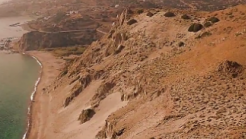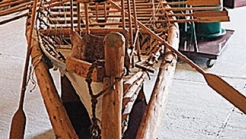

Greece
The visitor becomes acquainted with the arts of ancient Chios, understands the history and topography of the island, and realizes the island’s importance during the ancient times.
The building of the Chios Archaeological Museum was built in 1971. The three floors are connected via elevator and marble staircases. In the surrounding area, there is a small amphitheater for events.
Five rooms house the permanent exhibition, and one is used for the temporary ones. On the first floor, you can find: a)exhibits from prehistoric Chios from the Final Neolithic to the Mycenaean era b) samples of clay figurines and sculptures (statues, portraits, engravings) from the 8th century BC to the roman era and c) tombstones and inscriptions.
On the second floor there are samples of ceramic and metal crafting from the archaic to the roman era, while on the third floor you will find the temporary exhibition entitled «Psara in ancient times».
Since 1999, the museum operates as an exhibition space, but also as a space for creation of culture.
Thus, the visitor becomes acquainted with the arts of ancient Chios, understands the history and topography of the island, and realizes the island’s importance during the ancient times.


Southern Crete After the beach of Saint Pavlos a path leads tot he beach of dunes.


The Inscription Museum is unique in Greece, and the largest of its kind in the world. In it there are 13.536 inscriptions, mostly written in Greek. Chronologically, they cover the times from the first historic times to the paleochristianic, and most of them come from Greece.


Maritime Museum of Crete is located at the entrance to the historic fortress Firkas. It was founded in 1973 with the purpose of housing and the preservation of our maritime traditions and in particular of Crete, the view of our maritime history, as well as the cultivation of love toward the marine e
1039 Ε 6061 01515 00